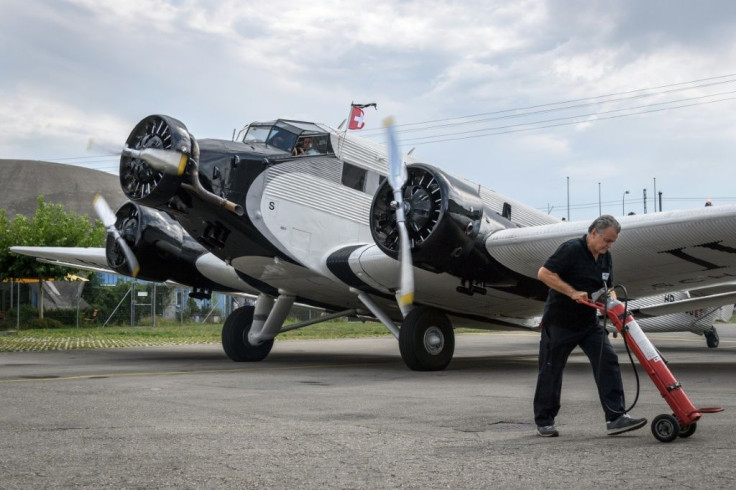Risky Flying Caused Vintage Plane Disaster: Swiss Probe
Risky piloting caused the fatal crash of a vintage plane in the Swiss Alps over two years ago that killed all 20 people on board, an investigation concluded Thursday.
The Junkers Ju 52 commercial aircraft known as "Iron Annie", built in 1939 and operated by Ju-Air, crashed on August 4, 2018.
The plane plunged nose down into the basin below Piz Segnas mountain in eastern Switzerland. Both pilots, 17 passengers and the flight attendant cum tour guide were killed.
The plane was on a flight across the Alps from Locarno in southern Switzerland to Dubendorf in the north.
The two pilots were both former air force and airline pilots who had often flown together in the previous two months.
The Swiss Transportation Safety Investigation Board said the plane began a left turn that developed into a downward spiral trajectory, and crashed within seconds.
"The pilots' high-risk flying was a direct cause of the accident," the report concluded.
It said that the plane entered a narrow valley at low altitude, with no possibility of an alternative flight path, and at a speed that was "dangerously low" in the circumstances.
As could have been expected, the plane encountered turbulence.
"The high-risk manner of flying through these not unusual turbulences caused the pilots to lose control of the aircraft," said the report.

"The aeroplane was flying too low to allow enough space to rectify the situation, and as a result it almost vertically hit the ground."
The corrugated steel and aluminium plane was built by the German firm Junkers. It was used by the Swiss air defence corps before being decommissioned in 1981.
The report found that several underlying factors also contributed to the accident.
The centre of gravity in the plane was beyond the rear limit on the flight due to inadequate preparation and errors in the Ju-Air software.
The pilots, and other pilots when working for Ju-Air, had become used to skirting the safety rules and taking high risks, even with passengers on board.
Ju-Air did not recognise these risks or prevent its pilots from breaking the rules, and safety requirements had not been met for some time.
The Federal Office of Civil Aviation also failed to identify safety problems at Ju-Air.
The report found that the aircraft was in an improper mechanical condition, but this did not contribute to the accident.
The report made 15 recommendations aimed at improving aviation safety.
© Copyright AFP 2024. All rights reserved.




















